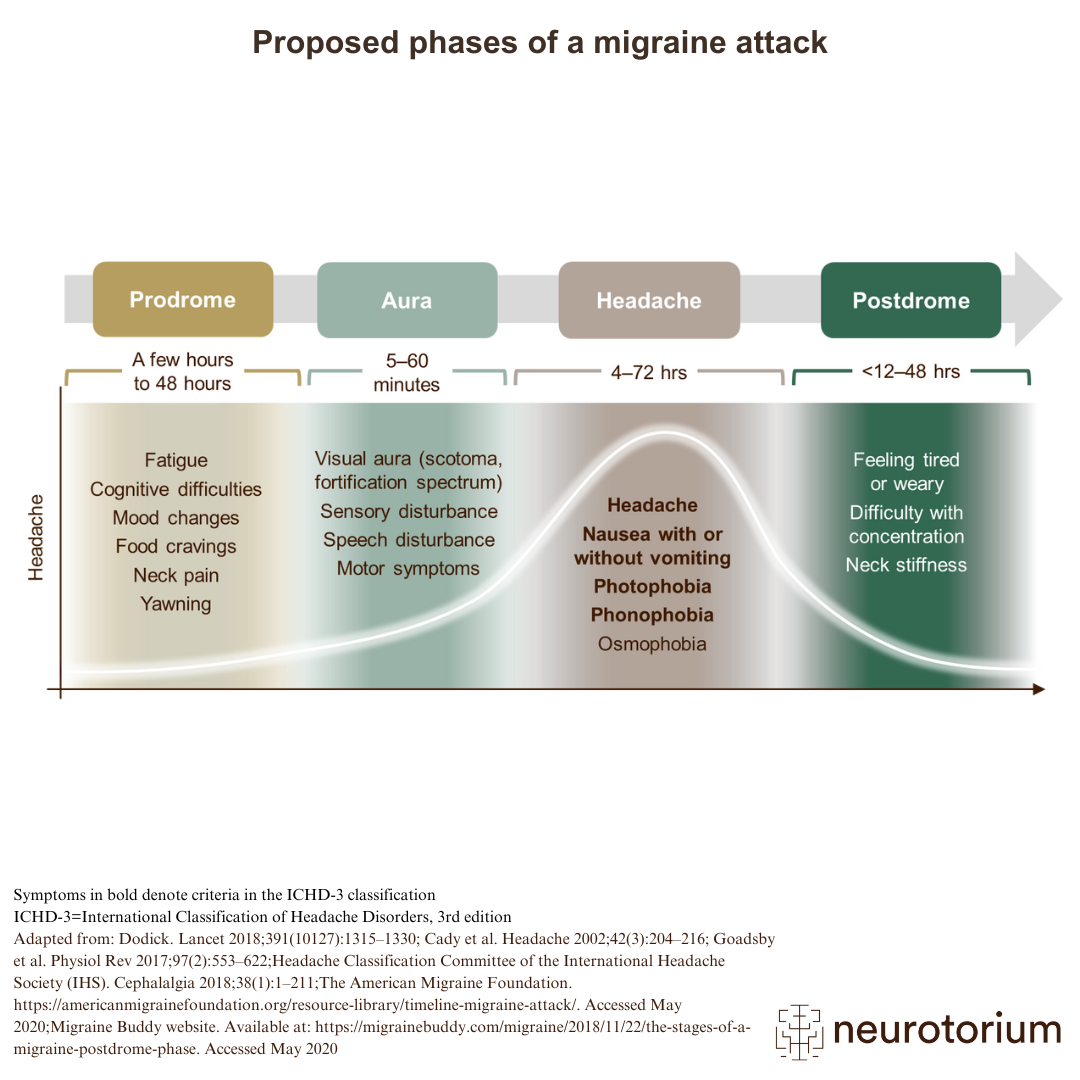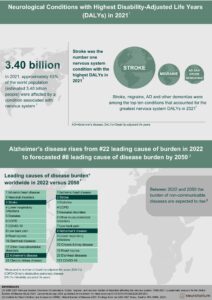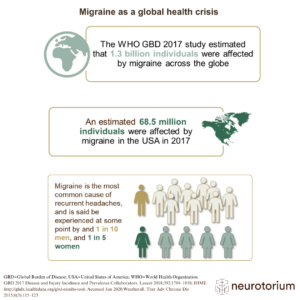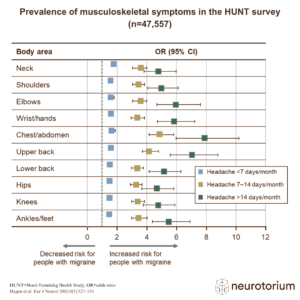Migraine attacks can be broken down into four phases: prodrome, aura, headache, and postdrome, as shown on the slide.1,2 The exact timing of each phase is highly variable; the headache phase of a migraine can range from 4–72 hours in adults, and 2–48 hours in children.1 However, in most people, the median time to peak intensity of the headache pain is 1 hour, and the median duration of the pain is 24 hours.1
Access our slidedeck for insights into the Course, Natural History, and Prognosis of Migraine
Follow this link for a one-minute video, showing what an aura may be like for people with migraine: https://www.youtube.com/watch?v=qVFIcF9lyk8.





